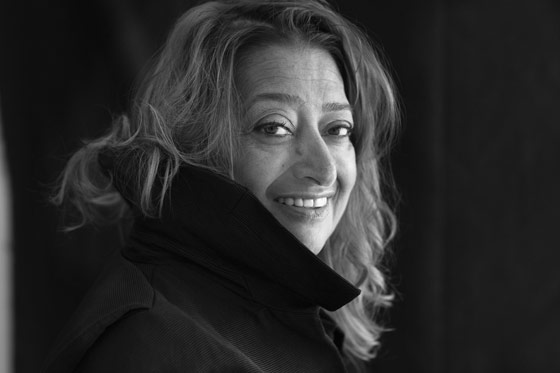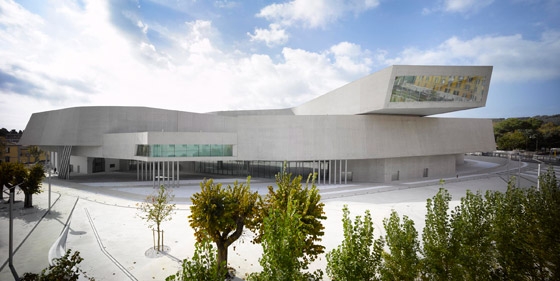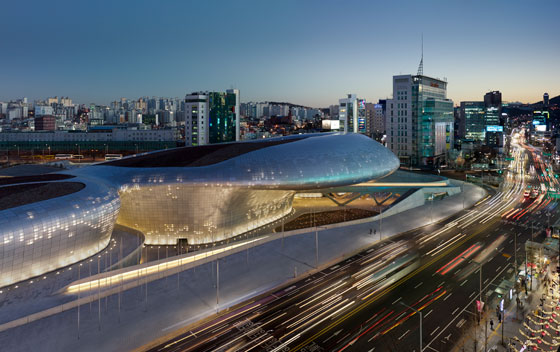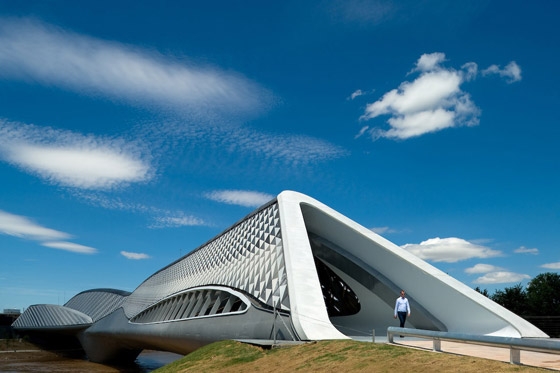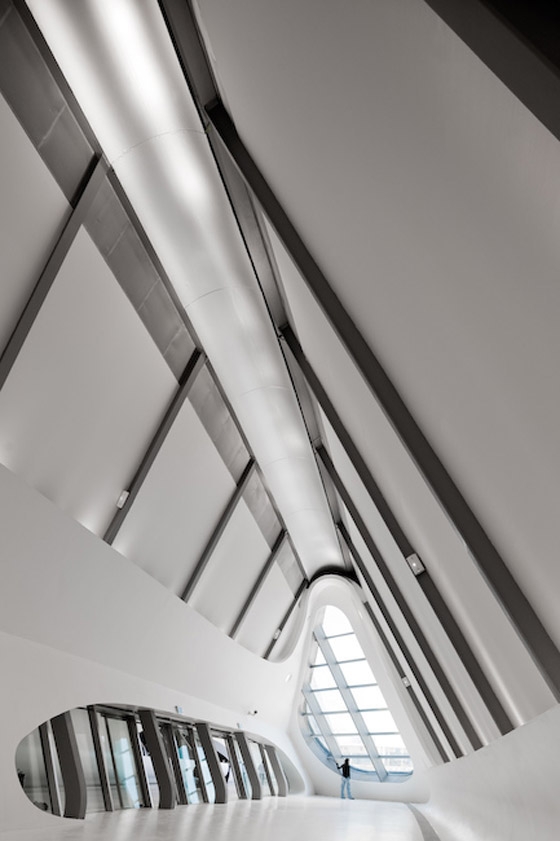Zaha Hadid (1950–2016)
Texto por Klaus Leuschel
Bern, Suiza
06.04.16
Respected design critic and curator Klaus Leuschel pays a personal tribute to the Baghdad-born architect who, despite her non-establishment profile, would go on to become one of industry’s most influential and paradigm-shifting grandees.
The International Style, as the various manifestations of contemporary architecture – from the Netherlands, Germany, and Czechoslovakia to Italy and France – synoptically presented by Alfred Barr and Philip Johnson at New York’s Museum of Modern Art in 1933, was a largely Eurocentric idea.
Perhaps it took the appearance of someone like Zaha Hadid on the scene to liberate architecture from the corset of Euclidean patterns of thought: 50 years later, with the competition entry for a leisure club above Hong Kong (The Peak Leisure Club).
I met her in Frankfurt in 1978. Then a student, I had travelled there from Hamburg in those dark days before the “Trans-Europe Express”, in response to Günter Bock’s announcement of an event entitled ARTE TEKTA. Everybody who was anybody was invited, from Peter Cook (previously Archigram) to Adolfo Natalini (previously Superstudio). Also on the guest list was Rem Koolhaas (Office for Metropolitan Architecture).
'MAXXI', the National Museum of XXI Century Arts, Rome, 2009; photos Iwan Baan (top) and Hélène Binet (above)
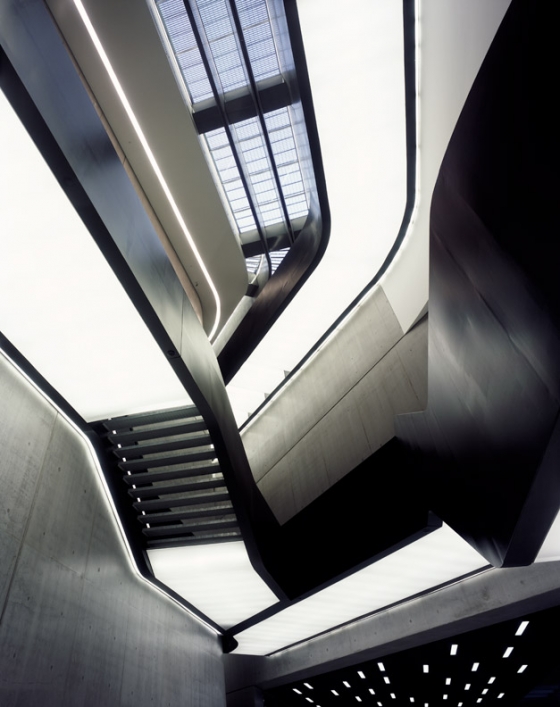
'MAXXI', the National Museum of XXI Century Arts, Rome, 2009; photos Iwan Baan (top) and Hélène Binet (above)
×Today, one would take the early ICE and get to the venue for the start of the event. As it was, I travelled the day before and paid a late-afternoon visit to the Städelschule. A beanpole of a chap was preparing a small exhibition there. A young woman was helping him.
It wasn’t difficult to tell that it was about the work of the OMA group. And it had a look about it that architects know all too well from competitions. There was no end in sight.
When the gangly gentleman by the name of Rem Koolhaas was taken aside by Günter Bock, apparently to discuss something, I offered the woman my assistance. Only in retrospect did I realise who it was that I’d had the opportunity to help: Zaha.
Dongdaemun Design Plaza, Seoul, 2014; photos Virgile Simon Bertrand
With her success in Hong Kong, came the disparaging commentaries, mocking – “unbuildable” – or uncomprehending – “why all these explosion-like drawings?”
For her brother, she worked on a conversion (Eaton Place 1981/82). At the time I didn’t know that it was his privilege to “rescue” Zaha’s balance sheet every year. After The Peak, he is said to have advised her to give up architecture for art – so that she would always be able to draw, and could at least earn money with it. He was alluding, in part, to her exhibitions of epochal “architectural paintings” at the Max Protetch Gallery in New York.
Architects, especially those who don’t move in the mainstream, have a hard mountain to climb. It’s all the more disheartening how the sole woman in the shark tank of world-class architecture has come under fire since then, fast and furious, by the great majority of critics. Oliver Wainwright (the Guardian) is among the laudable exceptions, having once relativised Zaha’s legendary outbursts by comparing her with a notably (often) surly Rem Koolhaas and other luminaries of the profession.
Zaragoza Bridge, Zaragoza, Spain, 2010; photos Fernando Guerra
Not everything that Zaha realised was world-class architecture. And this remains the case, even though she had found in Patrick Schumacher the partner who decisively contributed to making the ever more complex forms possible. Yet even if out of her 950 projects (by her own account, realised and unrealised), only ten were world-class, we should still remember her for this. Her colleague Jan Kaplicky (Future Systems) once said: “The people were against St Paul’s. They were against the Sydney Opera House and the ‘Centre Beaubourg’. Today, they send out millions of MMS messages and selfies with these buildings in them.”
And those who criticise Zaha Hadid for working too closely with potentates should ask themselves: why her? Once again, it was Oliver Wainwright who raised the question of why the headquarters of CCTV (also known, sarcastically, as Closed Circuit Television) in Beijing, the National Stadium in the same city, or prestigious buildings in the Persian Gulf haven’t elicited similar accusations at comparable volume?
© Klaus Leuschel for Architonic
